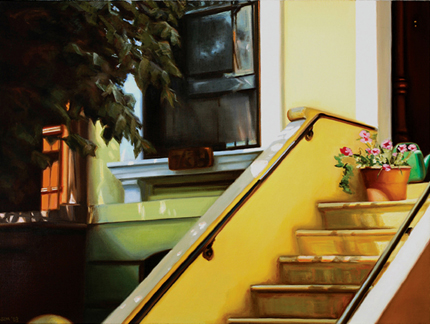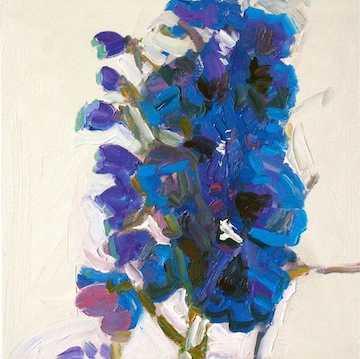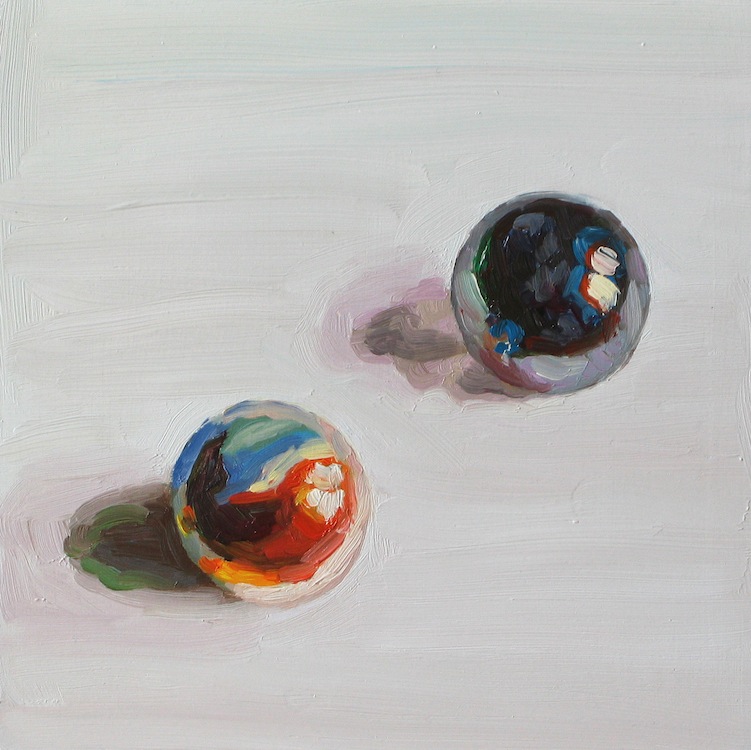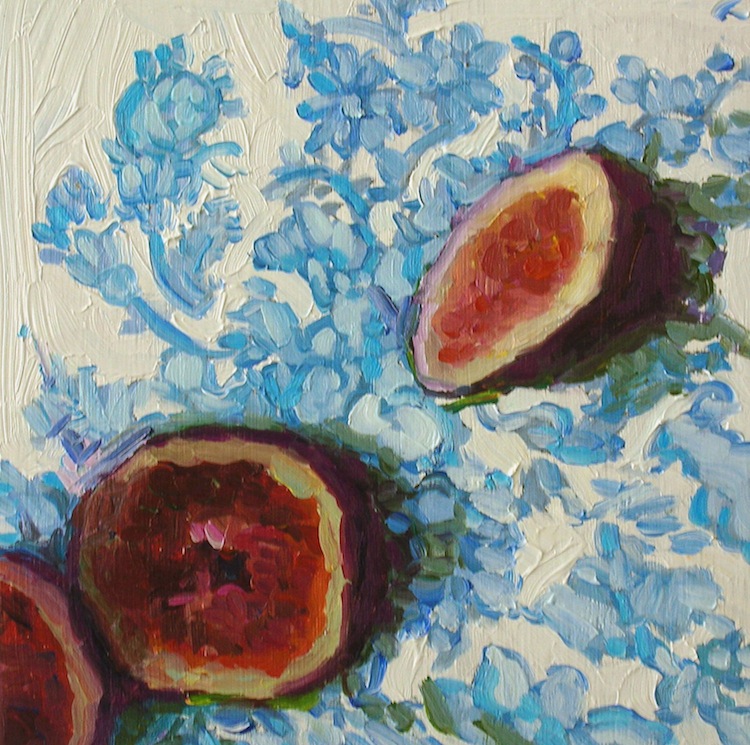About ten years ago I returned to oil painting after decades working on paper. I had built a career working abstractly, making prints and collages, but I hadn’t answered the original question I had as a child—how do da Vinci, Raphael, and Manet make the world look like that? Never answering this question seemed like a shame—something I would regret the rest of my life. I felt that I should take the risk, return to oil painting and see what happened.
Going to the Studio Every Day
I began going to my studio every day. I gave myself permission to make one stroke, and call that success. One stroke. One color. One step forward. I was disappointed all the time, but I still went. My studio is next to the Gowanus Canal in Brooklyn, NY; a waterway so polluted that it’s been superfunded by the United States government. I decided
that passing by the Gowanus every day to get to my studio, my haven of potentiality, was a metaphor for my willingness to create amid toxic forces, my willingness to fail in full daylight.
that passing by the Gowanus every day to get to my studio, my haven of potentiality, was a metaphor for my willingness to create amid toxic forces, my willingness to fail in full daylight.

Painting the Ordinary as an Act of Rebellion
I chose subjects that were pedestrian—marbles, toys, stoops, fruits and vegetables—objects so irrefutable in their ‘here–and–nowness’ that I could use their familiarity to anchor my art practice which felt boundless and scary. My focus did not reflect trends in the art world, but the qualities that drove the art world were as toxic to me as the Gowanus Canal.

People Who Love You Don’t Want You to Fail
I had a good friend who loved my dress collages. I was getting ready for a show at A.I.R. Gallery, an artist–run gallery created in 1972 specifically for women artists, and I was going to show some of my new oil paintings. Leslie said—Don’t! These paintings are so weak compared to your other work. She was really terrified for me. I knew the early paintings were raw, but there was an energy in them, a ‘something’s going on here’ that people responded to. At open studios visitors lingered and looked, longer than they did at my paper pieces.

Being Open to Connection
The show was great. No, it was fine. I had a chance to talk with other artists and art lovers about my work and Martin Heidegger’s notion of ‘the thingly nature of the thing’, and about the beauty of the ordinary, and how to get more work done, and how to find affordable studio space, and all the other things you talk about at openings and during the run of a show. I sold a few pieces. I was on my way.

The Price of Agency
When I was younger I longed to be famous. I wanted have lots of people look at my work and feel the same kind of amazement that I felt when I looked at the world around me. Now, I spend my time figuring out what I need in the physical world to feel safe, safe enough to take bigger mental risks. My art practice is how I speak with others of this passion.